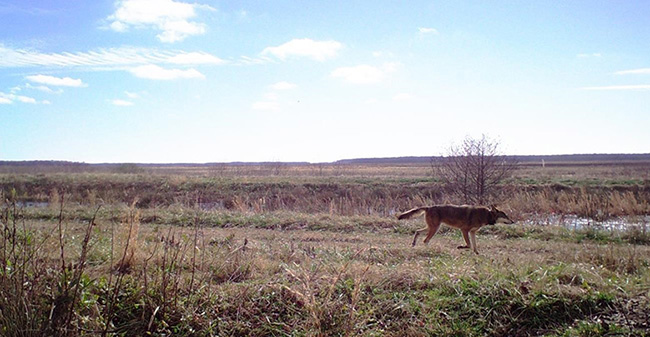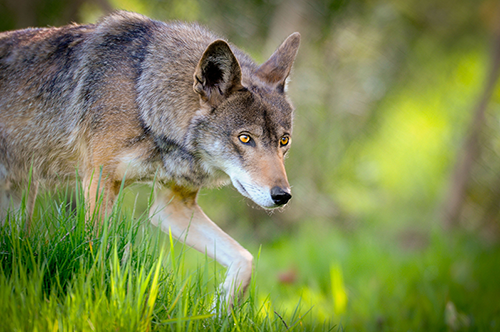
Year funded 2020
Project: Quail surveys to connect red wolf presence to quail survival
Opponents to the red wolf conservation program have used what is essentially grassroots outreach to spread damaging misconceptions that the wolves are killing quail, which is a favored game species.

Bobwhite quail have been declining rapidly across the southeast, despite large investments in improving habitat quality by concerned wildlife agencies, private land managers, and hunting groups. However, after 5 years of research, Wildlands Network can report strong and consistent, anecdotal evidence that quail remain common in certain areas within those expansive public lands.
One of the reasons postulated for the decline in quail numbers is the increased populations of mesopredator mammals, such as raccoons and opossums, which consume the eggs of the ground-nesting quail. However, red wolves are known to target those medium-size predators. Also, the presence of the wolves creates a “landscape of fear” for the smaller predators, making it harder for them to efficiently find and consume quail eggs. Wildlands Network believes it is possible to demonstrate scientifically that areas with red wolves have higher quail densities.

To that end, WildLife Canada Society provided a $45,000 grant to hire two summer interns to deploy multiple camera traps and to conduct point-count surveys for quail at a wide range of sites across the broader red wolf recovery area (5 counties). Quail coveys actively call during the summer months and their calls are easy to identify, making this a relatively easy species to census. This effort will allow them to compare the quail numbers with the camera detection rates for mesopredator mammals and red wolves.
The results of these studies will be presented in a creative video that demonstrates the benefits of red wolves to a balanced ecosystem and healthy population of quail.
A positive result from this study would create an increased tolerance for wolves by a wealthy and powerful segment of the hunting community, not just in North Carolina but also across the Southeast.
This is considered a high-priority action to help save the red wolves in North Carolina from the imminent threat of extinction in the wild – the US Fish and Wildlife Service now estimates there are only 20 wolves left in the reintroduced population.


